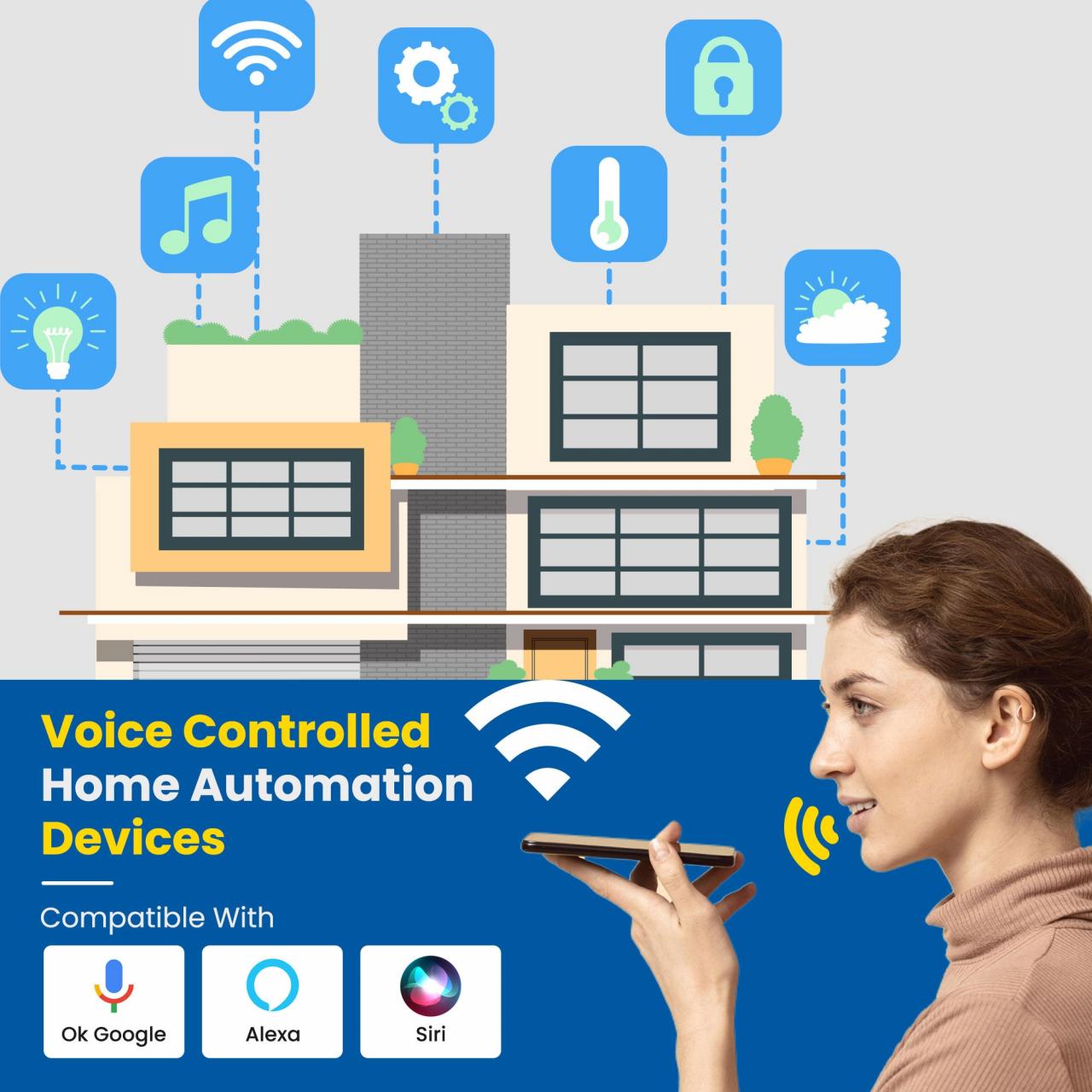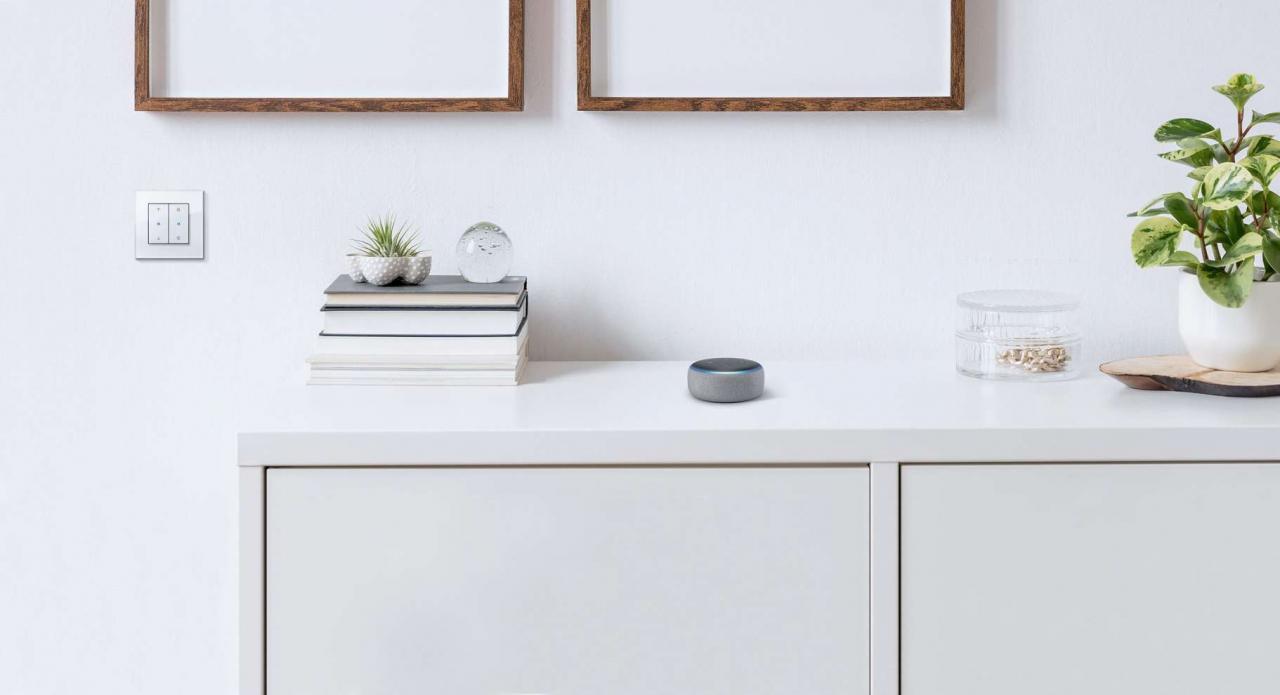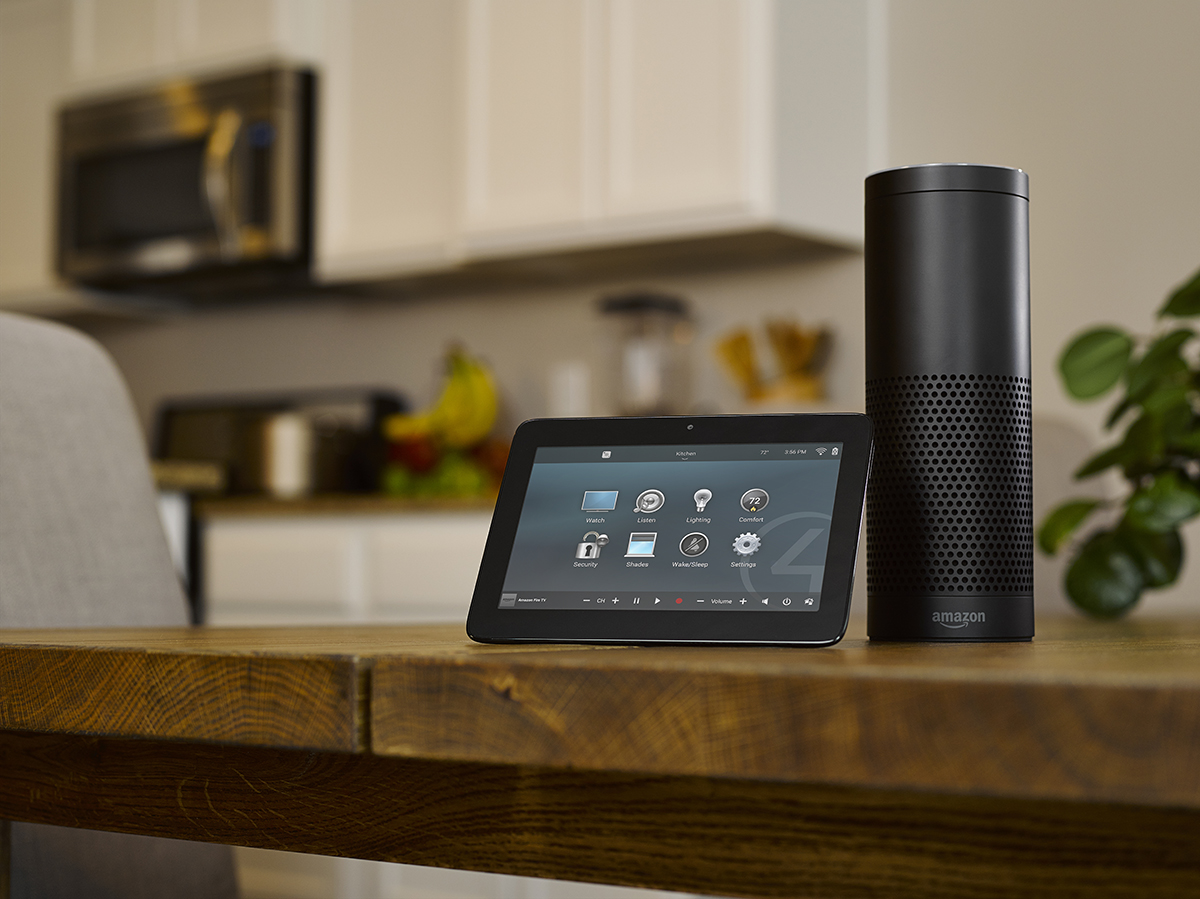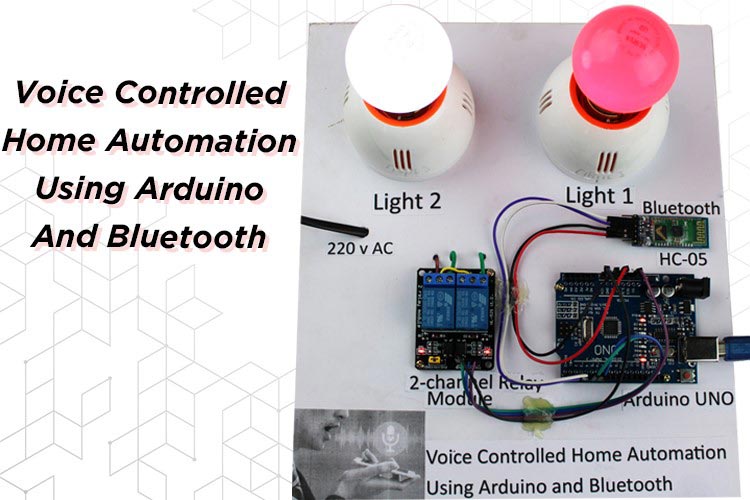How to create a smart home lighting system with voice control? It sounds futuristic, but it’s surprisingly achievable! This guide walks you through the process, from choosing the right smart bulbs and hubs to setting up voice commands and customizing your lighting experience. We’ll explore different systems, troubleshoot common problems, and even delve into the security and privacy considerations involved.
Get ready to illuminate your home with the power of your voice!
Imagine walking into your home and effortlessly dimming the lights with a simple voice command, or setting the perfect ambiance for movie night with a pre-programmed scene. This isn’t science fiction; it’s the reality of a smart home lighting system. This guide provides a comprehensive, step-by-step approach to building your own, covering everything from selecting compatible hardware to maximizing advanced features like scheduling and sensor integration.
Choosing the Right Smart Home Lighting System
Setting up a voice-controlled smart home lighting system can significantly enhance your home’s ambiance and convenience. The key to a successful setup lies in selecting the right system that aligns with your needs, budget, and technical expertise. This involves considering various factors, from the system’s features and compatibility to its overall cost and ease of use. Let’s delve into the crucial aspects of choosing a suitable smart lighting solution.
Smart Lighting System Comparison
Choosing the right smart lighting system depends on your specific needs and preferences. Below is a comparison of three popular systems, highlighting their features, price ranges, and compatibility. Note that prices can fluctuate based on sales and the number of bulbs purchased.
| System Name | Key Features | Price Range (per bulb) | Compatibility |
|---|---|---|---|
| Philips Hue | Wide range of bulb types and accessories (strips, lamps, etc.), extensive color options, robust app, excellent integration with other smart home ecosystems (e.g., Google Home, Amazon Alexa). | $15 – $50 | Apple HomeKit, Google Home, Amazon Alexa, Philips Hue Bridge |
| LIFX | Wi-Fi enabled (no hub required), wide color range, individual bulb control, energy-efficient options. | $20 – $70 | Apple HomeKit, Google Home, Amazon Alexa |
| IKEA Trådfri | Affordable option, good color range, integrates well with IKEA’s smart home ecosystem, requires a gateway hub for more advanced features. | $10 – $25 | IKEA Gateway, Apple HomeKit, Google Home, Amazon Alexa (with limitations) |
Centralized Hub vs. Individual Smart Bulbs
The decision between a centralized hub system (like Philips Hue) and individual smart bulbs (like LIFX) involves weighing several advantages and disadvantages.
A centralized hub offers enhanced control and stability, often providing better integration with other smart home devices and more sophisticated features like scene creation and scheduling. However, they require an extra piece of hardware and a dedicated power outlet, potentially adding to the overall cost and complexity.
Individual smart bulbs offer simplicity and ease of setup. Since they connect directly to your Wi-Fi network, they typically require less configuration. However, they may be less reliable in large networks and might not offer the same level of advanced features as hub-based systems. They also often rely on your home’s Wi-Fi network for communication, which can be a point of failure if your internet connection is unstable.
Basic Smart Lighting System Architecture
A basic smart lighting system typically comprises several key components:
A diagram would show the following components and their connections:
1. Smart Bulbs: These are the light sources themselves, capable of being controlled remotely. They can be LED bulbs offering various color temperatures and brightness levels.
2. Smart Home Hub (Optional): A central control unit (like the Philips Hue Bridge) that manages communication between the smart bulbs and your smartphone/voice assistant. This is not always necessary, depending on the chosen smart bulb system.
3. Smartphone/Tablet: This is your primary interface for controlling the lighting system through a dedicated app.
4. Voice Assistant (Optional): Devices like Amazon Echo or Google Home provide voice control capabilities, integrating with the smart lighting system to allow for hands-free operation.
5. Home Wi-Fi Network: Provides the network connection for communication between all components. A stable and reliable Wi-Fi connection is crucial for a smooth user experience.
Setting up a smart home lighting system with voice control is easier than you think! You’ll need smart bulbs and a compatible hub, then you can control everything with your voice. Once you’ve got that sorted, you can focus on other home improvements, like finding reliable cleaning services; check out best resources for finding reliable home cleaning services in South Korea if you’re in the area.
Then, you can relax in your beautifully lit, and sparkling clean, smart home!
Setting up Voice Control
Integrating voice control into your smart lighting system adds a layer of convenience and seamless automation to your home. This section will guide you through connecting your lights to popular voice assistants and creating custom voice commands. The process is generally straightforward, but the specific steps may vary slightly depending on the brand of your smart bulbs and your chosen voice assistant.Setting up voice control involves linking your smart lighting system’s app with your voice assistant’s app.
This allows your voice assistant to communicate with your lights and execute your commands. Most systems use a straightforward process involving account linking and device discovery. It’s crucial to ensure both your smart home app and voice assistant app are up-to-date for optimal functionality.
Setting up a smart home lighting system with voice control is easier than you think! You’ll need smart bulbs and a compatible hub, but first, consider the logistics if you’re planning a long-term project. If you’re thinking of basing yourself in South Korea for this, check out this helpful guide on comparing different visa options for long-term stays in South Korea before you start buying smart home tech.
Once you’re settled, you can easily integrate voice control with apps like Google Home or Alexa, enjoying automated lighting at your new home.
Connecting Smart Lights to Voice Assistants
This section details the process of connecting your smart lighting system to Google Assistant, Amazon Alexa, and Apple HomeKit. While the specific steps differ slightly, the general principle remains consistent: you link the accounts and then discover your lights within the voice assistant app.
- Google Assistant: Open the Google Home app. Tap the “+” icon to add a device. Select “Works with Google” and then search for your smart lighting system’s brand (e.g., Philips Hue, LIFX). Follow the on-screen instructions to link your accounts and discover your lights. Once discovered, they’ll appear in the Google Home app, ready for voice control.
- Amazon Alexa: Open the Alexa app. Go to “Skills & Games” and search for your smart lighting system’s brand. Enable the skill, linking your smart lighting account. Alexa will then scan for your lights. After discovery, your lights will be listed within the Alexa app and ready for voice commands.
- Apple HomeKit: If your smart lighting system is HomeKit compatible, you’ll typically find a code or QR code within the smart lighting app’s settings. Open the Home app on your iOS device, tap the “+” icon, and choose “Add Accessory.” Scan the code or enter it manually. Your lights will then appear in the Home app, ready for Siri voice control.
Controlling Individual Lights and Groups, How to create a smart home lighting system with voice control
Managing your lighting effectively often requires controlling individual lights and creating groups for more convenient voice commands. This involves setting up your lights within your chosen smart home app before linking to the voice assistant.
Setting up a smart home lighting system with voice control is easier than you think! You’ll need smart bulbs and a compatible hub, then you can control everything with your voice. If you’re considering a move, finding the right environment is key, and best neighborhoods in Seoul for families with young children can offer peace of mind while you build your tech-savvy home.
Once settled, you can easily expand your smart lighting to create the perfect ambiance in your new family space.
- Individual Lights: Most smart home systems allow you to assign unique names to each light within their respective apps. This allows for specific voice commands like “Turn on the bedroom lamp” or “Dim the bathroom light.”
- Groups of Lights: Create groups of lights within your smart home app (e.g., “Living Room Lights,” “Downstairs Lights”). This simplifies control; you can issue a single voice command to control all lights in a group, such as “Turn off the living room lights.”
Creating Voice Commands for Lighting Scenarios
Once your lights are connected, you can create custom voice commands to control them. This allows you to automate common lighting tasks and personalize your smart home experience. The following examples demonstrate typical voice commands:
- “Turn on the living room lights.” This command will activate all lights assigned to the “Living Room Lights” group.
- “Dim the kitchen lights to 50%.” This command will reduce the brightness of the kitchen lights to 50% of their maximum brightness (if supported by your system).
- “Set the bedroom lights to warm white.” This command will adjust the color temperature of the bedroom lights to a warmer setting (if your lights support color temperature adjustment).
- “Turn off all the lights.” This will turn off all lights connected to your voice assistant, or a designated group if specified (e.g., “Turn off all downstairs lights”).
Advanced Features and Customization: How To Create A Smart Home Lighting System With Voice Control

Source: leccygenesis.com
Smart home lighting systems offer far more than simple on/off control. By exploring advanced features, you can create a truly personalized and automated lighting experience that enhances both convenience and energy efficiency. This section will delve into scene creation, scheduling, sensor integration, and color temperature options.
Creating Scenes and Schedules
Pre-programmed lighting scenes and schedules transform your home’s atmosphere with ease. Scenes combine multiple lights and their settings (brightness, color) to instantly evoke a specific mood. Schedules automate these scenes based on time of day or other triggers. This eliminates the need for manual adjustments, optimizing both convenience and energy use. The following table provides some illustrative examples:
| Scene Name | Description | Automation Schedule |
|---|---|---|
| Wake-Up | Gradually increases brightness in the bedroom over 30 minutes, simulating sunrise. | 7:00 AM weekdays |
| Movie Night | Dimms all lights except a small accent lamp, creating a cinematic atmosphere. | 7:30 PM every Saturday |
| Party Mode | Sets all lights to a vibrant, pulsating color scheme. | 8:00 PM – 11:00 PM on event nights (manually triggered) |
Sensor Integration for Enhanced Automation and Energy Efficiency
Integrating sensors significantly enhances the intelligence and efficiency of your smart lighting system. Motion sensors automatically turn lights on when movement is detected and off after a set period of inactivity, conserving energy and improving security. Ambient light sensors adjust the brightness of your lights based on the existing light levels in a room, preventing unnecessary energy consumption during daylight hours.
Occupancy sensors provide similar functionality to motion sensors, but can differentiate between human presence and other forms of movement. Imagine a simple diagram. At the center is a smart home hub. Three arrows point towards it, each labeled: Motion Sensor (placed in hallway), Ambient Light Sensor (placed near a window), and Occupancy Sensor (placed in living room). From the hub, another arrow points to several light bulbs in different rooms, indicating that the sensors feed information to the hub, which then controls the lights accordingly. This visual representation clearly shows how sensors interact with the central hub and ultimately influence the lighting in your home.
Color Temperature Options and Their Impact on Mood and Ambiance
Smart bulbs offer a wide range of color temperatures, measured in Kelvin (K). Lower Kelvin values (e.g., 2700K) produce warmer, more yellowish light, ideal for relaxation and creating a cozy atmosphere in the evening. Higher Kelvin values (e.g., 6500K) produce cooler, bluer light, better suited for focus and productivity during the day. Intermediate values (e.g., 4000K) offer a neutral, balanced light suitable for most situations.
Experimenting with different color temperatures allows you to tailor the ambiance of each room to suit its purpose and the time of day. For instance, a warm white light in the bedroom at night promotes relaxation, while a cool white light in the kitchen during the day helps maintain alertness and focus.
Troubleshooting and Maintenance

Source: gira.de
A smoothly functioning smart home lighting system enhances convenience and ambiance. However, occasional glitches can disrupt the experience. This section covers troubleshooting common problems and maintaining your system for optimal performance and longevity. Regular maintenance ensures your system continues to provide seamless control and reliable operation.
Troubleshooting Common Issues
Addressing common problems is crucial for maintaining a reliable smart lighting system. The following steps provide solutions for connectivity issues, unresponsive lights, and voice control failures.
- Connectivity Problems: If your lights are offline or failing to connect to your network, first check your Wi-Fi router’s signal strength. Weak signals can disrupt connectivity. Try moving your router closer to the lights or using a Wi-Fi extender. Secondly, ensure your smart home hub (if applicable) is properly connected and functioning. Restarting both your router and the hub can often resolve temporary connection issues.
Finally, verify that your lights are correctly added to your smart home app and that the network settings within the app are accurate. Incorrect network passwords or SSIDs are common causes of connectivity failures.
- Unresponsive Lights: If lights fail to respond to commands from your app or voice assistant, begin by checking the power supply to the light fixture. A simple power cycle (turning the light switch off and on again) can often resolve minor software glitches. Next, ensure the light bulb itself is functioning correctly; a faulty bulb can prevent responsiveness. Try replacing the bulb with a known good one.
If the problem persists, check the app for any firmware updates for the lights. Outdated firmware can lead to malfunctions. Finally, restart your smart home hub to refresh the connection between your hub and the lights.
- Voice Control Failures: Problems with voice control typically stem from issues with your voice assistant (e.g., Alexa, Google Assistant). Start by ensuring your voice assistant is properly set up and connected to your smart home system. Check the microphone’s sensitivity and ensure it is not obstructed. Also, verify that the correct commands are being used; even slight variations in wording can sometimes cause the voice assistant to misinterpret the instruction.
Setting up a voice-controlled smart home lighting system is easier than you think! You’ll need smart bulbs and a compatible hub, but a crucial factor is having a strong, reliable internet connection to control everything. Check out this guide on reliable internet providers and speeds in South Korean apartments if you’re in Seoul, as a fast, stable connection is essential for seamless voice commands and responsiveness.
Once you’ve got that sorted, you can enjoy the convenience of adjusting your lighting with simple voice instructions.
If you are using a smart speaker, try moving it closer to the lights to improve voice recognition. Finally, ensure that your voice assistant is up-to-date with the latest software; outdated software can lead to compatibility issues.
Maintaining Your Smart Lighting System
Proactive maintenance significantly extends the lifespan and reliability of your smart lighting system. Implementing these tips will help you avoid common problems and ensure consistent performance.
- Regular Software Updates: Regularly check for and install firmware updates for your smart bulbs and hub. These updates often include bug fixes, performance improvements, and new features. Keeping your system up-to-date ensures compatibility and optimal functionality.
- Bulb Replacement: Smart bulbs have a limited lifespan, just like traditional bulbs. Replace bulbs promptly when they begin to dim or fail to turn on, to prevent complete system failure.
- Cleaning: Dust accumulation can affect the performance of smart bulbs and sensors. Regularly clean your smart bulbs and sensors using a soft cloth. Avoid using harsh chemicals or abrasive cleaners.
Smart Lighting System Settings Review Checklist
A periodic review of your system settings ensures optimal performance and security. This checklist Artikels key areas to examine.
- Connectivity: Verify all lights are connected to your network and responding correctly. Check signal strength and consider using a Wi-Fi extender if necessary.
- Firmware Updates: Check for and install any available firmware updates for your bulbs, hub, and voice assistant.
- Scenes and Schedules: Review your lighting scenes and schedules to ensure they are still relevant and functioning as intended. Update or remove any outdated or unnecessary settings.
- Security Settings: Review your system’s security settings, ensuring strong passwords are in use and that unauthorized access is prevented.
- Energy Consumption: Monitor the energy consumption of your smart lighting system. Identify areas where you can optimize energy usage through smarter scheduling or automation.
Security and Privacy Considerations

Source: com.au
Connecting your lighting system to the internet and voice assistants introduces new security and privacy risks. While the convenience is undeniable, it’s crucial to understand these potential vulnerabilities and take proactive steps to mitigate them. Ignoring these aspects can leave your home and personal information exposed to potential threats.Smart home lighting systems, by their nature, require an internet connection and often rely on cloud services for functionality.
This introduces several security concerns. Malicious actors could potentially exploit vulnerabilities in the system’s software or network to gain unauthorized access to your home network, potentially controlling your lights or accessing other connected devices. Furthermore, the data collected by your system, such as usage patterns and voice commands, raises privacy concerns.
Network Security Best Practices
Protecting your smart home network is paramount to safeguarding your lighting system and other connected devices. Implementing the following measures significantly reduces the risk of unauthorized access and data breaches.
- Use a strong and unique password for your Wi-Fi network and all smart home devices. Avoid easily guessable passwords or using the same password across multiple accounts.
- Enable two-factor authentication (2FA) wherever possible. This adds an extra layer of security, requiring a second form of verification beyond your password.
- Regularly update the firmware of your smart home devices. Updates often include security patches that address known vulnerabilities.
- Install a firewall on your router to block unauthorized access attempts from the internet. A firewall acts as a gatekeeper, filtering network traffic and preventing malicious connections.
- Consider using a virtual private network (VPN) to encrypt your internet traffic and protect your data from eavesdropping, especially when using public Wi-Fi networks.
- Segment your network using VLANs (Virtual LANs). This isolates your smart home devices from other devices on your network, limiting the impact of a potential breach.
Privacy Concerns with Voice-Activated Devices
Voice assistants, integral to many smart lighting systems, constantly listen for wake words, raising concerns about data collection and potential misuse.
- Data Collection: Voice assistants record your voice commands and potentially surrounding conversations. This data is often sent to the manufacturer’s servers for processing and improvement of the service. While manufacturers claim to anonymize this data, concerns remain about its potential use and security.
- Data Security: The security of this data stored on manufacturer servers is a key concern. Breaches could expose sensitive information, including conversations and personal preferences. It is crucial to review the privacy policies of your chosen system and voice assistant.
- Potential for Misuse: While unlikely, there’s a theoretical risk of malicious actors gaining access to your voice data and using it for identity theft or other malicious purposes.
- Lack of Transparency: The extent of data collection and its use is not always completely transparent to the user. Carefully reading the terms of service and privacy policies is crucial to understanding what data is being collected and how it is being used.
Ultimate Conclusion

Source: iotdesignpro.com
Creating a smart home lighting system with voice control offers unparalleled convenience, customization, and energy efficiency. By following the steps Artikeld in this guide, you can transform your home into a technologically advanced and personalized space. Remember to prioritize security and privacy throughout the process, and enjoy the seamless integration of voice control into your daily life. Start experimenting with different scenes and schedules to truly personalize your lighting experience—the possibilities are virtually limitless!
FAQ Summary
What’s the difference between a smart bulb and a smart lighting system?
A smart bulb is a single light that connects to your network and can be controlled individually. A smart lighting system often includes a hub that connects multiple bulbs and allows for more advanced control and automation features.
Can I use my existing light fixtures with smart bulbs?
Most smart bulbs are designed to fit standard light sockets, but always check the bulb’s specifications to ensure compatibility with your fixtures.
What if my internet goes down? Will my lights still work?
Most smart bulbs can still be controlled via their physical switches even if your internet is down, though smart features like scheduling and voice control will be unavailable.
How much does a smart home lighting system cost?
The cost varies greatly depending on the number of bulbs, the type of system you choose, and any additional accessories like sensors. Expect to pay anywhere from a few hundred dollars to several thousand for a complete setup.
Are smart bulbs energy efficient?
Many smart bulbs are LED based and significantly more energy efficient than traditional incandescent bulbs. The energy savings will vary depending on usage and bulb type.



